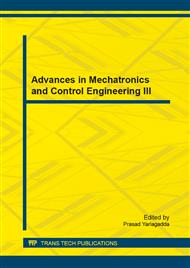p.436
p.447
p.452
p.456
p.461
p.468
p.473
p.477
p.482
The Research of Response Time and Scheduling Algorithm in the TTCAN Bus Control Networks
Abstract:
By analyzing the priority arbitration bit by bit without destroy in can bus rule, the article elicits the conclusion that if static priority based on the affirmatory system model is used, the lower priority’s messages will be much more delayed, even lose some data when the bus’s bandwidth is widely used and scheduling can’t be modified during the system. The dynamic priority promoting method and math model of SQSA and SQMA is achieved in the article, it analyses the model’s rate of taking in and sending out in large quantities, the largest delay, the problems and solutions when using SQMA. In the end, It is validated that the method of improved dynamic in the article has good performances on the network rate of taking in and sending out in large quantities, the average delay and the rate of network usage by emulational experiments.
Info:
Periodical:
Pages:
461-467
Citation:
Online since:
October 2014
Authors:
Price:
Сopyright:
© 2014 Trans Tech Publications Ltd. All Rights Reserved
Share:
Citation:


